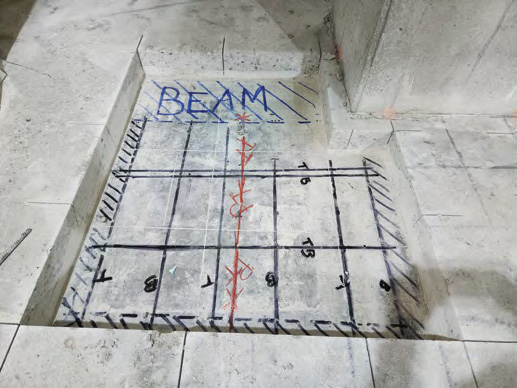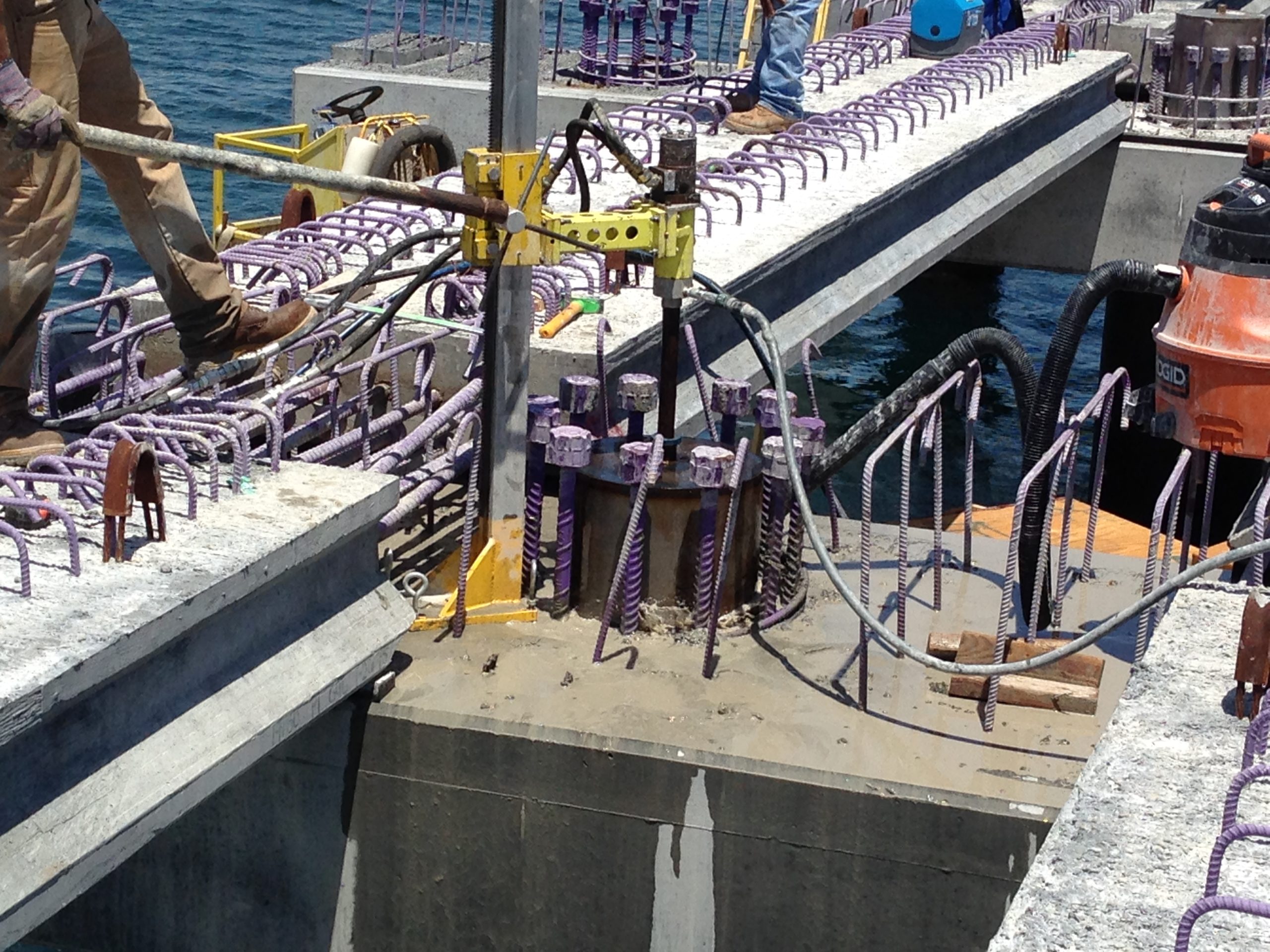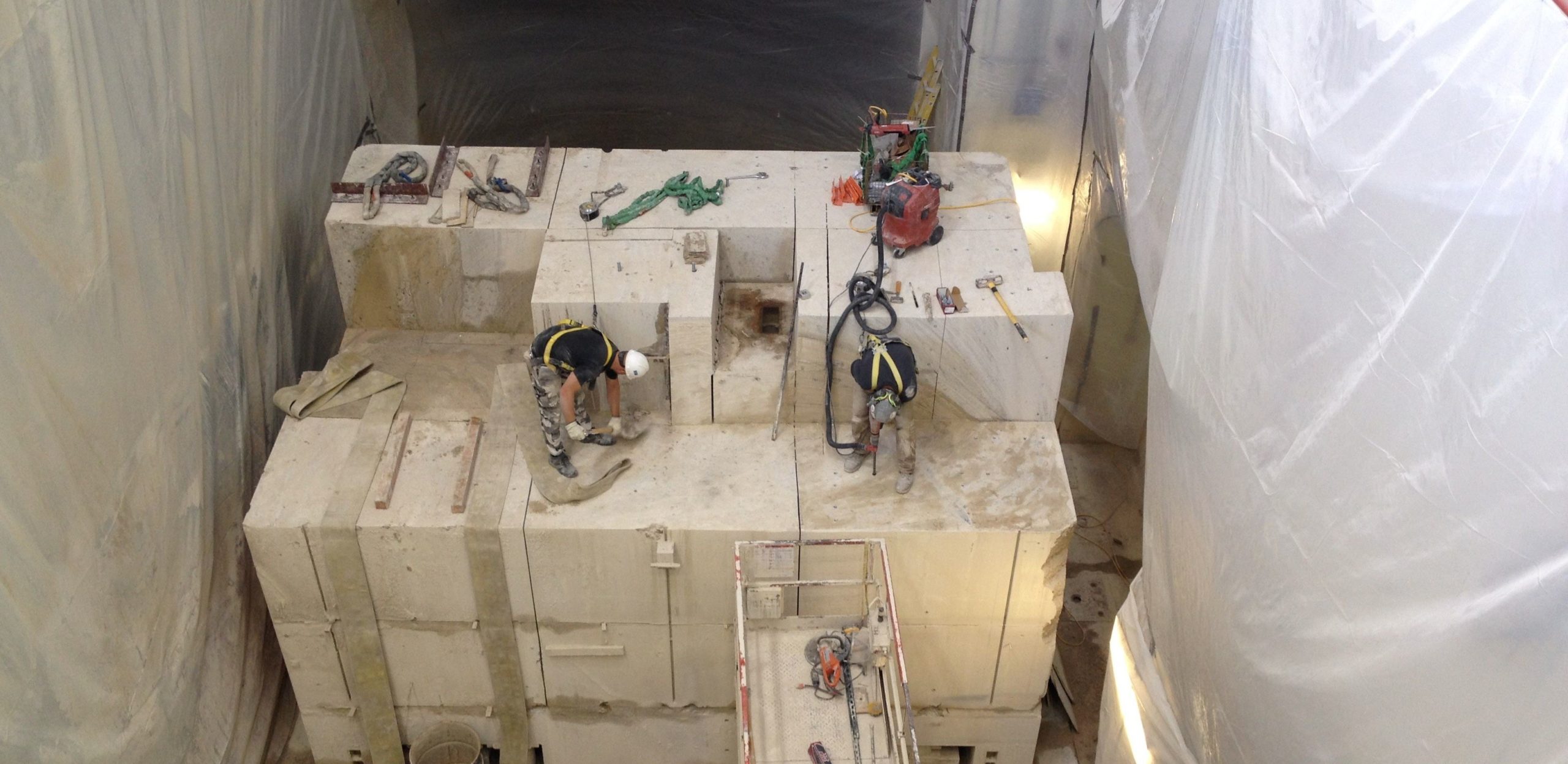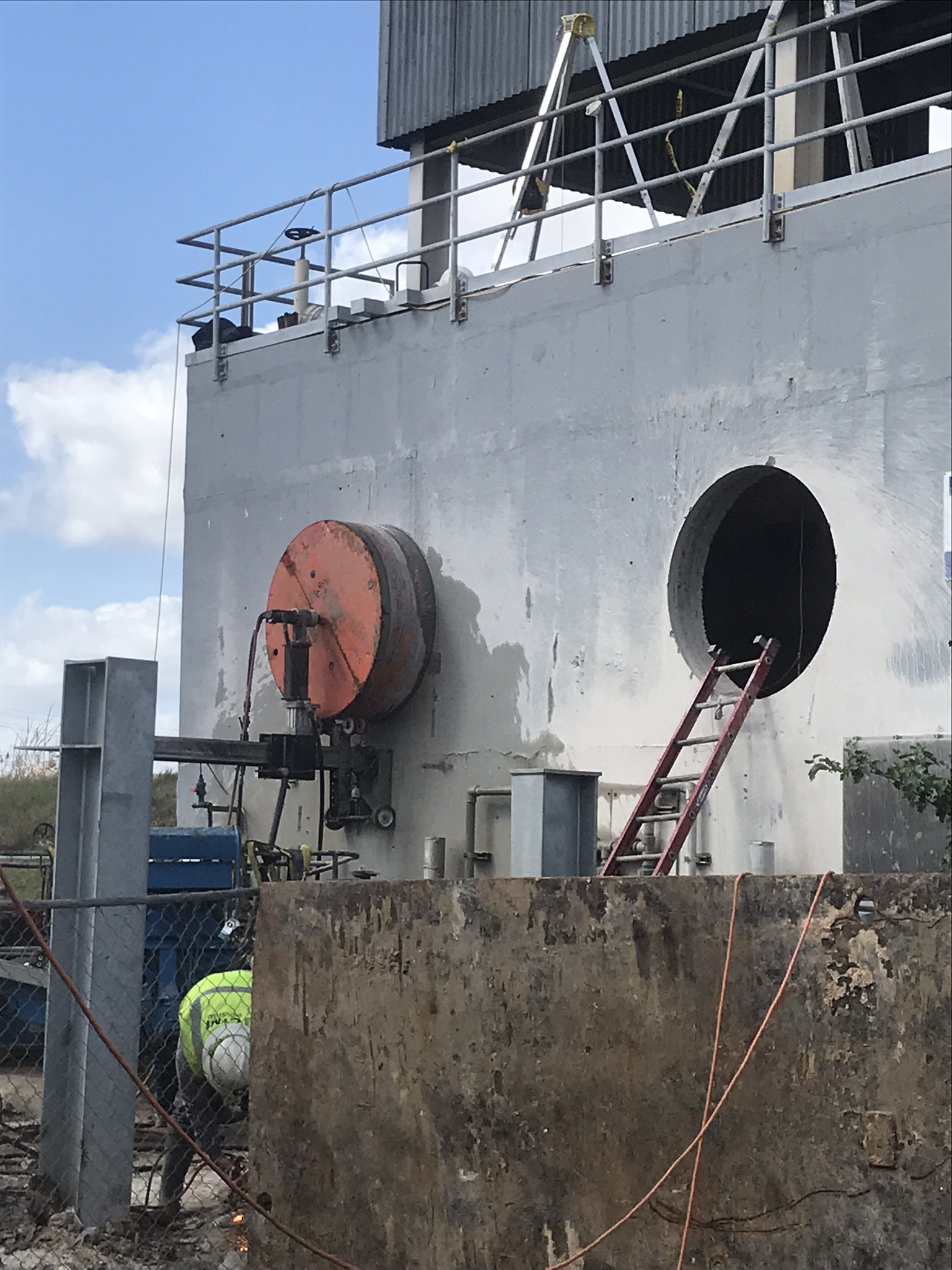
Semper Paratus [Always Ready]
![Semper Paratus [Always Ready]](https://www.concreteopenings.com/wp-content/uploads/2014/11/1-Photo-6-e1424382046143-scaled.jpg)
Fast Response Cutter Supports U.S. Coast Guard

Wire cuts were made in 3-foot by 3-foot cross sections through the pier caps.
Earlier this year, a general contractor was commissioned by the United States Coast Guard to remove an old concrete wharf and several finger piers at the military organization’s boat station in San Juan, Puerto Rico. The structures were to be replaced by a newly-designed wharf that would be the port for the station’s new vessel—the Fast Response Cutter (FRC). In order to complete the project on time and keep the water around the wharf as free from debris as possible, another type of fast response cutter was needed.
As part of the U.S. Coast Guard Sector San Juan Cutter Homeport project, a specialist contractor was required to make precise cuts through the 14-inch-thick concrete deck of the existing wharf and separate over 150 18-inch by 18-inch piles at their caps. The cutting contractor would also assist with the removal of the wharf deck sections. The general contractor for the project, CH2MHill, subcontracted Orion Marine Group for the demolition work and the construction of the new wharf and piers. Orion then subcontracted CSDA member Accu-Cut Concrete Services, Inc., of Palm Harbor, Florida, to perform concrete cutting techniques that would deconstruct the existing structures quickly and safely.
“Our main task was to assist in the removal of the main wharf deck and pile caps, leaving its main piles intact for reuse. We also had to cut and help remove finger piers Charlie and Delta at the station, including the decks, pile caps and the piles themselves,” explained John Robinson, owner of Accu-Cut. “Using our specialized cutting equipment was the most efficient way to remove heavily-reinforced concrete sections without excessive debris falling into the water. It also insured that we completed the work without damaging the piles that were to be reemployed.”
Hydraulic hammers had been used on some of the less sensitive areas of the wharf, but most of the main structure had experienced some deterioration and the bottom mat of rebar was exposed. Therefore, any further work on the concrete had to be performed with low levels of noise and vibration.
Accu-Cut began by planning and laying out cut lines for the 14-inch-thick decks on the main wharf and on piers Charlie and Delta. The concrete deck areas were divided into a series of sections ranging from 12 feet long or wide on some of the finger piers to 17 feet on the main wharf. Flat sawing equipment was first set up on pier Charlie for cutting to commence. An operator made two cuts lengthways along the pier followed by 34 cuts across the pier’s width, taking around 18 hours to complete. The cut sections were left sitting on their pile caps until a crane positioned on a barge was used to lift and remove each one. The process was repeated for pier Delta in approximately the same amount of time.
Flat sawing work then began on the main wharf deck, which was also cut and removed in sections weighing between 25,000 and 50,000 pounds depending on their relative location to the crane. Pieces had to be cut in line with the crane’s reach and lifting capacity, so as not to cause it to lose balance. While the wharf deck was being removed, the contractor began wire sawing the main wharf pile caps into sections up to around 50,000 pounds each. Wire cuts were made in 3-foot by 3-foot cross sections through the caps, after which they were left standing free on 18-inch by 18-inch piles.

All but two of the 177 piles under the caps were cut using Accu-Cut’s patented Stingray pile saw.
All but two of the 177 piles under the caps were cut using Accu-Cut’s patented Stingray pile saw, which took between six and ten minutes to cut through each one. Regular readers of Concrete Openings may remember the Stingray, named so because of its shape and use underwater, from its use on a similar task in Accu-Cut’s Bayway To Go! job story [December 2013]. The diamond wire sawing system intergrated into the Stingray allowed it to be positioned around the piles and cut them to different elevations. When cutting was almost complete, cap and pile sections were rigged and held by crane while the last remaining piles were cut using a conventional wire saw setup. All cut concrete sections were loaded onto barges and transported to another location at the port, where they were processed and recycled.
“I had heard about the success Orion had with Accu-Cut and the company’s Stingray saw on the Bayway Bridge and other demolition projects in the Tampa Bay area, so when we were faced with the challenges this project presented I was confident John and his crew had the experience and resources to overcome them,” said Cory Donoghue, project manager for Orion Marine Group. “The requirement to reemploy the existing piles, combined with the deteriorated condition of the existing structures, tight work zone, environmental concerns and our proximity to the active U.S.C.G. vessels were all factors that demanded the demolition be performed safely, precisely and efficiently. Thanks to Accu-Cut, we were able to do exactly that, allowing us to quickly follow up the concrete cutting with pile extraction on the finger piers and pile cap construction on the wharf.”
Between February and April of 2014, the cutting contractor performed over 2,300 linear feet of flat sawing though 14-inch-thick reinforced concrete pier decks, cut 177 18-inch by 18-inch piles below the caps for reuse, made around 300 square feet of wire saw cuts and core drilled six holes through the pile caps measuring 6 inches in diameter and 3 feet deep. These holes were for rigging and lifting where there was not enough clearence around some cap sections on the main wharf .
To cut the deck sections, Accu-Cut used Core Cut 6566 and 3765 flat saws fitted with various blades up to 42 in diameter and powered by CB24 and CB35 hydraulic power units—all from CSDA member Diamond Products. A Hydrostress wire saw was used to cut the pile caps while the contractor’s own Stingray saw cut the piles for reuse.
This was the first job the contractor had done outside the mainland U.S., so making sure all the right equipment was correctly shipped to Puerto Rico and maintaining continuous operation was a new take on a familiar challenge. In addition, changing weather conditions meant that the contractor had to deal with intermittent heavy rain several times each day, almost every day during the work. While these downpours would last for 10 to 15 minutes and caused somewhat of an inconvenience, a continuous 10 to 15 mph breeze presented a real challenge for the crane and barge operators. Standard items of personal protective equipment were provided for the work, including life jackets. During the project, the Occupational Safety & Health Administration inspected the jobsite and no citations were issued.
“The job went very well and the overall demolition of the wharf and piers was completed on time. We are currently working on an additional phase of this project, which was awarded to us after our success on the initial scope of work,” said Robinson. “It was a learning experience for us, both at the site and back in Florida. It was a logistical challenge regarding the whereabouts of key people and equipment, but our guys stepped up and did a great job,” he concluded.
Due for completion in early 2015, the U.S. Coast Guard Sector San Juan Cutter Homeport project will not only allow the station’s new vessels to securely dock, but it will also provide the Coast Guard with the opportunity to deport quickly when required—always ready.
Company Profile
Accu-Cut Concrete Services, Inc. has been a CSDA member for 12 years and was established in 1990. The company is based in Palm Harbor, Florida, has five trucks, 10 employees and offers the concrete cutting services of flat sawing, core drilling, wall sawing, wire sawing, hand sawing and grinding. Accu-Cut is a CSDA Certified Operator company.
Sentinel-Class Fast Response Cutters
The United States Coast Guard currently has a fleet of 34 Fast Response Cutter (FRC) patrol boats, six of which are stationed in San Juan, Puerto Rico. The 154-foot vessels have a minimum top speed of 28 knots and replace the aging 110-foot Island-class patrol boats. They conduct missions that include port, waterways and coastal security: fishery patrols; search and rescue and national defense. Each FRC has a crew of 24 and has a range of 2,950 nautical miles. They are armed with a stabilized 25-millimeter machine gun mount and four crew-served .50-caliber machine guns. For more information, visit www.uscg.mil.
Resources
General Contractor:
CH2MHill / Orion Marine Group
Sawing and Drilling Contractor:
Accu-Cut Concrete Services, Inc.
Palm Harbor, Florida
Phone: 727-787-4843
Email: accucut@tampabay.rr.com
Methods Used: Wire Sawing, Flat Sawing














